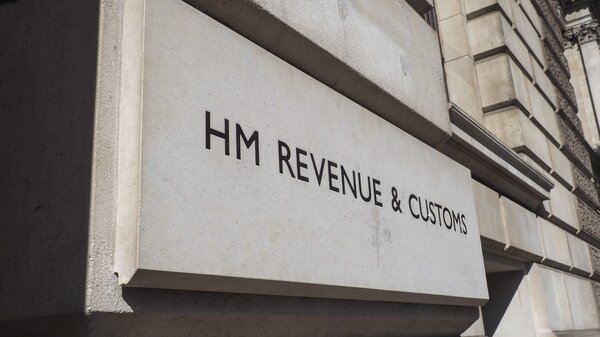
In a move to enhance personal data protection and clamp down on fraud, HMRC will no longer issue Unique Taxpayer Reference (UTR) numbers over the phone from 6 May 2025. This new measure aims to improve the security of sensitive taxpayer information following a rise in fraudulent attempts to access HMRC systems via telephone.
The UTR, a 10-digit number crucial for individuals and businesses registering for Self Assessment or working as sole traders, will now only be provided through secure written communication channels, including online tax accounts and postal correspondence.
This decision has sparked discussions across the tax and accountancy sectors, with many professionals applauding the move for reinforcing digital security, while others raise concerns over potential delays for those needing urgent access.
Why HMRC Is Changing the Rules
HMRC has cited increasing threats of identity fraud and cybercrime as the main drivers behind the policy change. Taxpayers’ UTRs are often used to gain access to confidential tax records, making them an attractive target for fraudsters.
By halting over-the-phone disclosures, HMRC aims to close a commonly exploited loophole. In a statement, the department said: “We’re continually looking at ways to make the tax system safer. Removing the ability to obtain UTRs over the phone is a necessary step to protect taxpayers and their personal data.”
This adjustment is part of a broader digital transformation within HMRC that includes expanding use of multi-factor authentication, secure messaging, and verified online identity checks.
How UTR Numbers Will Now Be Provided
From 6 May 2025, individuals seeking a UTR will need to register for Self Assessment online or use their existing Personal Tax Account to view their UTR securely. For those unable to access online services, HMRC will send UTRs via official postal letters.
Accountants and tax agents will also need to rely on written correspondence or their own client access portals, instead of calling HMRC directly.
The change marks a shift away from telephone-based services towards HMRC’s goal of becoming a fully digital-by-default organisation, though support will remain for those who require non-digital options.
Sector Response: Praise and Pushback
Tax professionals have generally welcomed the update as a win for data security. Accountancy bodies have flagged the telephone route as a weak point for some time, particularly in relation to clients’ UTR details being misused.
However, some practitioners worry that the transition could delay new business setups or disrupt sole traders waiting for their UTRs during tax registration. A representative from the Association of Taxation Technicians (ATT) commented: “We support HMRC’s decision in principle. But we urge them to ensure there are fast and secure alternatives in place, especially for those who need urgent access for filing or starting work.”

Security First: A Broader HMRC Strategy
This move forms part of HMRC’s wider Tax Administration Strategy, which aims to modernise the tax system, cut fraud, and increase efficiency through digital tools.
Recent HMRC reports show a concerning rise in phishing attempts and social engineering scams targeting taxpayers, especially around deadlines. By restricting access to sensitive information like UTRs, HMRC is taking a preventative approach to reduce the impact of these scams.
The department says it will continue to work with industry bodies and software providers to streamline the process for accessing UTRs securely and efficiently in the digital age.
What It Means for Taxpayers and Agents
For individuals, anyone registering for Self Assessment for the first time must now apply online and wait for a confirmation letter in the post containing their Unique Taxpayer Reference (UTR).
If a UTR is lost, it can no longer be retrieved by calling HMRC taxpayers will instead need to log into their Personal Tax Account or request a written copy. For accountants and agents, UTRs will no longer be accessible through client calls to HMRC.
Instead, agents must ensure that clients are properly registered online, or provide signed authorisation to request UTR details in writing. These changes could result in longer lead times, particularly for those starting freelance or contract work, so HMRC is encouraging taxpayers to register well in advance.


Fun Fact
UTRs were introduced as part of the UK's Self Assessment system in the 1990s, giving each taxpayer a unique identifier for tracking tax liabilities. Though often thought of as just a number, they play a critical role in maintaining HMRC’s vast records.
Similar systems exist worldwide like the IRS’s Taxpayer Identification Number (TIN) in the US but the UK’s 10-digit UTR is still unique to individuals, never reused, and often valid for life.
Conclusion
As identity theft and data breaches continue to rise, HMRC’s decision to stop issuing UTRs over the phone is a sensible step towards better safeguarding taxpayer information. While the change may create short-term friction for some, it aligns with the UK’s broader digital security strategy and reduces vulnerabilities in the system.
Taxpayers and agents alike are encouraged to prepare for the new process by familiarising themselves with HMRC’s online systems and planning early for Self Assessment. As always, clear communication and early registration will be key to staying compliant and stress-free.
Frequently Asked Questions
What is a UTR number and why do I need one?
A Unique Taxpayer Reference (UTR) is a 10-digit number assigned by HMRC to anyone registered for Self Assessment. It’s essential for filing tax returns and communicating with HMRC.
When will HMRC stop giving UTRs over the phone?
From 6 May 2025, HMRC will no longer provide UTR numbers via phone calls. All UTRs must be accessed through secure written methods.
How can I find my UTR number after this change?
You can find your UTR in your Personal Tax Account, on previous Self Assessment correspondence, or request it by post through your online account.
What if I don’t have online access?
HMRC will continue to support those without internet access by sending UTRs by post. You can also contact them to request paper-based services.
Will this affect agents and accountants?
Yes. Agents will need to avoid relying on telephone calls to HMRC for UTRs and ensure clients are properly registered or authorise written communication for access.










